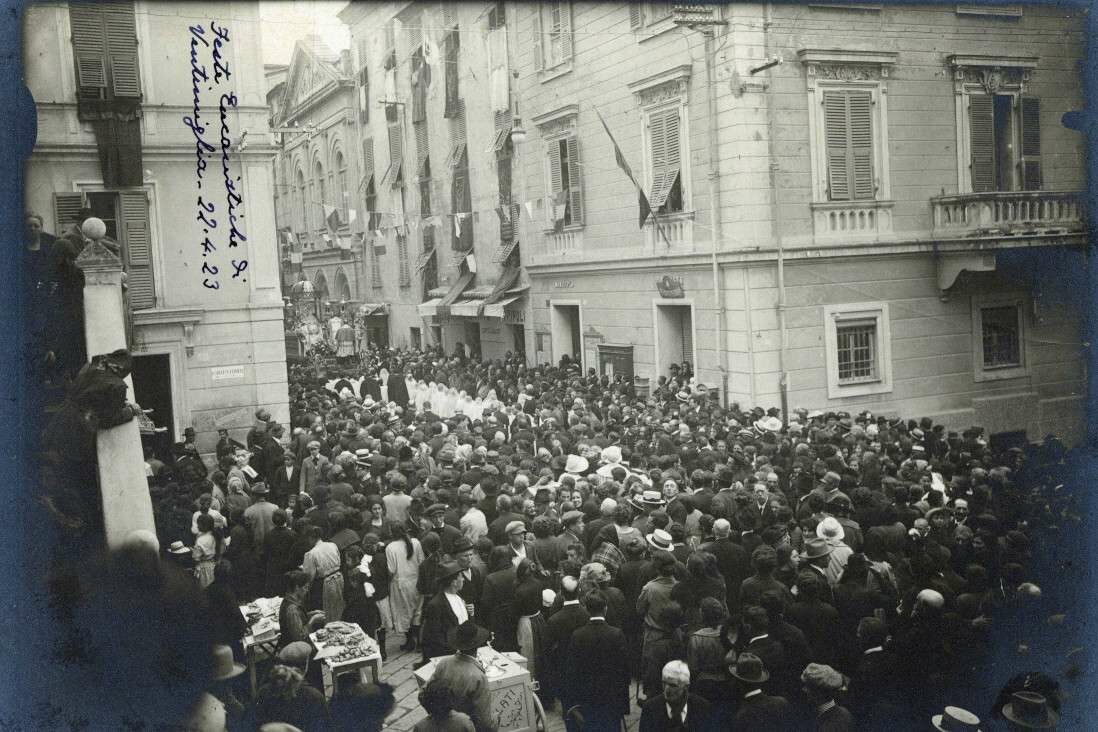Organising a procession

Organising a procession, yesterday as today, is not a simple matter, nor is it free of bureaucracy.
It could have been even more difficult before 1929, when the relationship between the Italian State and the Catholic Church was still conflictual.
Everyone at some point in their lives has seen a procession, in some small town, in their neighbourhood, for a particular liturgical festivity.
Someone will have observed its slow, cadenced march, the multicoloured headscarves and uniforms of those taking part, someone else will have waited for the road to reopen, impatient to get back on track.
However, one does not always know the bureaucratic process required to organise a procession.
We are helped to do so by an episode that occurred a century ago, in 1920, which is particularly significant because it recounts what relations between State and Church were like before the Lateran Pacts.
The story is reported by the protagonist himself, Fr Venturini, in a typewritten report.
The document is kept in the Fondo dell’Apostolato della Preghiera, recently reordered and transferred to our historical archive.
Accompagniamo p. We accompany Fr. Venturini, national director of the AdP, to the police station.
P. Venturini at the police station
The Jesuit, in that distant June of 1920, wanted to organise a procession for men devoted to the Sacred Heart and adherents of the Apostolate of Prayer, for which he had to obtain the necessary permits. For reasons of public order and security, in fact, yesterday as today, it is essential to request permission from the police headquarters, specifying the day and purpose of the event, the approximate number of participants and the chosen route.
This is what the Jesuit did, talking to an official and receiving an immediate refusal, the first of a long series.
P. Venturini did not give up and pointed out to the quaestor that the Freemasons’ procession had just recently been authorised, with its headquarters in Piazza del Gesù, and that it had taken a much longer route than the one proposed by the Jesuit.
He added that the streets for the religious procession were not very busy streets and not crossed by trams. This tells us a lot about the Rome of the time: the traffic that characterises the Piazza Venezia area today was not there in 1920, as the urban layout was very different, the Via dei Fori Imperiali did not yet exist, the Vittoriano had not yet been completed and did not look as it does today, nor did the square. There were still two neighbouring churches, which were demolished in later years.
The Quaestor at this point observes that such a procession could be the target of some ill-intentioned person, even though anarchist attacks were no longer recorded at that time, the Jesuit points out that it was a 200-man demonstration, which makes us realise that women were excluded from this devotional form.
However, one should not think that women did not take part in the activities of the Apostleship of Prayer, where they played significant roles. We will elaborate on this aspect in a future installment of the column.
The Jesuit’s answer on the gender of the participants continues, assuring the quaestor that 200 men would be able to defend themselves against any ill-intentioned attackers.
The last ‘no’ from the quaestor
The last reason given by the quaestor concerns the proximity of the Campidoglio and therefore the authorities coming and going from the Municipality of Rome, which could be obstructed by the procession’s snake.
The Jesuit points out that the procession is scheduled for a Sunday, when there are usually few carriages passing through on their way to the City Hall, where no dignitaries go on a public holiday.
In the end, the quaestor opposed a firm ‘no’, referring to agreements already made with the Vicariate of Rome. Fr Venturini gives in, the procession will not take place.
In his report, however, the Jesuit reported that he had made a further check with the Vicariate: there was no such agreement with the police headquarters.
Despite Fr Venturini’s insistence, the procession was never authorised, the result of a still uneasy relationship between the papacy and the Italian State.
After the Lateran Pacts, the rift between Church and State was gradually recomposed.
The document we have used today to recount this episode is certainly useful for investigating these dynamics between State and Church before 1929, but it also helps us to derive a lot of data on the urban aspect and society of Rome at that time: the use of carriages more widespread than the car, the procession of only men, the reference to Freemasonry.
The photograph that accompanies today’s article was taken several years after the episode recounted: it is a procession for the Eucharistic Feast held in Liguria, in Ventimiglia on 22 April 1923, also conserved in the Apostolate of Prayer fund.
Maria Macchi











